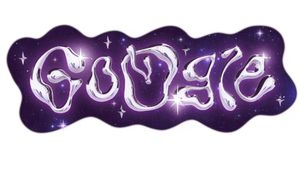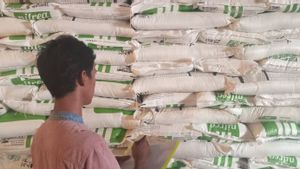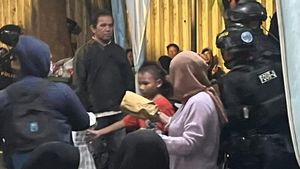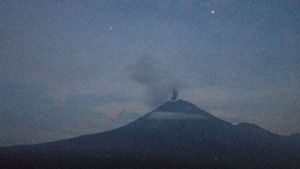JAKARTA - Armed with data from the James Webb Space Telescope, scientists managed to find water in comets in the main asteroid belt.
Solar System scientists have long studied the origins of water that allows life on Earth. Now using the NIRSpec (near-Infrared Spectrograph) instrument of their Webb Telescope has uncovered it.
Scientists have confirmed that gas, particularly water vapor, is right around comets in the main asteroid belt for the first time, proving the water from the ancient Solar System can be preserved as ice in the region.
However, based on a study published in the journal Nature, the success of water detection came with a new puzzle. Where unlike other comets, Comet 238P/Read does not have carbon dioxide that can be detected easily.
"Our world filled with water, full of life and uniqueness in the universe as far as we know, is a mystery - we are not sure how all this water got here," said Webb Deputy Scientist Project for Planetary Science and co-author of the study who reported the findings, StefanieMilam.
"Understanding the history of the distribution of water in the Solar System will help us to understand other planetary systems, and if they can host Earth-like planets," he added.
Comet 2384P/Read is the main belt comet, which is the object in the main asteroid belt but periodically displays halos or comas and comet-like tails.
The main belt comet itself is a fairly new classification, and Comet 2384/Read is one of the three original comets used to establish the category.
Previously, comets were detected from the Kuiper Belt and Oort Clouds, outside Neptune's orbit, where the ice could be preserved further from the Sun.
It was this frozen material that evaporated as it approached the Sun that led to a coma and its tail flowing into the comet's trademark, distinguishing it from asteroids.
Scientists have long speculated water ice could be preserved in a warmer asteroid belt inside Jupiter's orbit, but definitive evidence is elusive until the Webb Telescope reveals it.
"In the past we have seen objects in the main belt with all the characteristics of comets, but only with this precise spectral data from Webb can we say yes, definitely the ice water that creates that effect," said astronomer Michael Kelley of the University of Maryland, lead author of the study.
"With Webb's observation of Comet Read, we can now show that water ice from the early Solar System can be preserved in the asteroid belt," he added.
Carbon dioxide is a bigger surprise. Usually carbon dioxide forms about 10 percent of volatile material in comets that can easily be evaporated by the heat of the Sun.
Furthermore, scientists present two possible explanations for the lack of carbon dioxide. One of them is Comet 2384P/Read, which does have carbon dioxide when it forms, but has disappeared due to warm temperatures.
Being in an asteroid belt for a long time could cause carbon dioxide to evaporate more easily than water ice, and could absorb out for billions of years, Kelley said.
An alternative, added Kelley, Comet 2384P/Read may form in a very warm pocket in the Solar System, where there is no carbon dioxide there.
"The next step is to take research outside Comet 2384P/Read to see how the comparison of other major belt comets is," said astronomer Heidi Hammel, who is also a study author.
The objects in the asteroid belt are small and dim, and with Webb we can finally see what is happening with them and draw some conclusions. Are the other main belt comets also short of carbon dioxide? Whatever it is, it would be nice to know," Hammel explained.
Lastly, Milam envisions the possibility of bringing more research closer to home (Earth).
"Now Webb has confirmed that there is water as close to the asteroid belt, it will be very interesting to follow up on this discovery with a sample collection mission, and learn what else the main belt comet can tell us," he said.
The English, Chinese, Japanese, Arabic, and French versions are automatically generated by the AI. So there may still be inaccuracies in translating, please always see Indonesian as our main language. (system supported by DigitalSiber.id)













